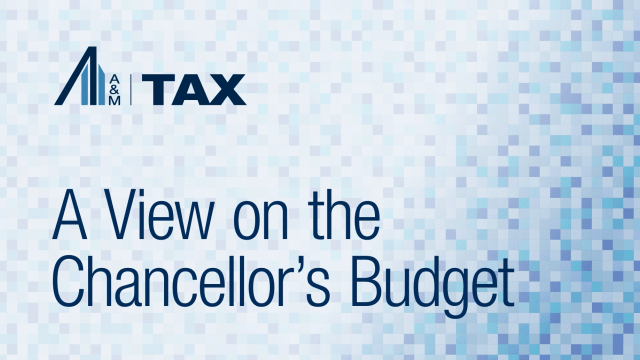Efficient Cash Tax Management and Federal Tax Refund Opportunities
Cash management has been top of mind for corporations, especially during the recent economic difficulties, and should be a best practice regardless of the economy. If you’re a calendar year-end corporate taxpayer, it’s the time of the year that several tax payment deadlines are quickly approaching. That is, it’s coming time to file your return, or an extension, and pay any remaining tax due for 2011.
By the time you get your income tax provision in the books, if not before, it will be time to turn to compliance matters. However, it may also be time to think about what refund opportunities exist, as not only does this impact your upcoming federal income tax return, it is also an important consideration in your income tax provision calculation.
And from a pure cash-flow perspective, if you feel you’ve paid your “fair share,” to use a little of the rhetoric heard in our current political discourse, you might consider your options to recoup any excess cash tax payments as soon as possible and improve your company’s cash flow and liquidity.
With this in mind, federal income tax refunds may be available in the simple instance of overpayment of estimated taxes or in situations where timely tax planning might provide refund opportunities. This article discusses some of the procedural aspects of claiming a federal income tax refund as well as some related tax planning opportunities to obtain them as quickly as possible or, in some cases, to defer payment of cash taxes owed when future net operating losses are anticipated.
Specifically, from a procedural standpoint, a few common options for claiming a federal income tax refund include:
(1) Filing a “quickie refund”;
(2) Applying for a tentative refund; and
(3) Filing for an extension of time for payment of taxes when you are anticipating a net operating loss carryback.
Let’s explore each of these alternatives.
The Quickie Refund
A corporation may file an application for quick refund of the overpayment of estimated tax via Form 4466 if it overpaid its estimated tax for the year by at least 10 percent of the expected tax liability. For these purposes, an overpayment of estimated tax is equal to the excess of the estimated income tax the corporation paid during the tax year over the final income tax liability expected for the tax year at the time this application is filed.
This may very well be the case if your company experienced an unexpected decline in earnings towards the end of last year as a result of the continued global economic uncertainty or otherwise, or if your company calculated estimated tax payments prior to considering some end-of-year items, including certain corporate events or business developments, year-end planning (e.g., appropriate accounting method changes, etc.) or the like.
To obtain this quick refund, Form 4466 must be filed by the 15th day of the third month after the tax year-end and before the corporation files its income tax return (yet not before the end of the corporation’s tax year-end). Therefore, for calendar-year corporations, the application generally will be due by March 15.
The IRS must act on the application within 45 days of the date of the filing unless there are material errors or omissions in the filing. Importantly, it should be noted that if a refund is granted but later found to be excessive, the corporation may be liable for an addition to tax based on the excessive amount, equal to the lesser of:
(1) The refund; or
(2) The excess of (a) the corporation’s income tax liability (as defined in Section 6425(c)) as shown on its return over (b) the estimated tax paid less the refund.
This addition to tax is imposed as interest figured from the date the refund was paid or credited, until the original due date of the corporation’s return. Additional penalties may also apply for underpayment of estimated tax payments. Therefore, if there is uncertainty as to the amount of refund available, it may be advisable to wait until the tax return is filed to seek the refund in order to avoid unnecessary interest and penalties.
On the other hand, if the application is denied by the IRS, the taxpayer’s recourse will be to request a refund by filing its original tax return. However, this will inevitably result in a delayed refund and perhaps an increased likelihood of IRS audit.
The NOL Quick Refund
A corporation (except an S corporation) may also seek a refund by filing a Form 1139, Corporation Application for Tentative Refund, based on:
- The carryback of an NOL (or a loss from operations of a life insurance company);
- The carryback of a net capital loss;
- The carryback of an unused general business credit; or
- An overpayment of tax due to a claim of right adjustment under Section 1341(b)(1).
In other words, once a corporation has filed its tax return reflecting an NOL, for example, it may carryback such NOL to reclaim cash taxes paid in prior years. Such application must generally be filed within 12 months of the end of the tax year in which an NOL, net capital loss, unused credit or claim of right adjustment arises.
The IRS generally will process this application within 90 days of the later of the date the corporation files the application or the last day of the month that includes the due date (including extensions) for filing the corporation’s income tax return for the year in which the loss or credit arose. This option provides the opportunity for an expedited refund, prior to review by the Joint Committee on Taxation.
If a tentative refund is granted and the IRS subsequently determines that the refund was overstated because of an overstatement of the value of property, negligence, disregard of rules or substantial understatement of income tax, the corporation may be assessed significant interest and penalties.
If, however, the IRS disallows the application because of material omissions or math errors that are not corrected within a 90-day period, there is no recourse other than filing for a refund through an original tax return or an amended tax return. And again, in this case a refund will not be expedited, and may be subject to IRS examination prior to payment.
Deferral of Tax Payment When NOL Anticipated
In addition to outright tax refunds like those discussed above, a corporate taxpayer may file a Form 1138, Extension of Time for Payment of Taxes by a Corporation Expecting a Net Operating Loss Carryback, to get an extension of time to pay tax relating to its preceding tax year if an NOL is expected for the current year that can be carried back.
Here, the primary benefit is that you do not have to wait until the end of your tax year to file for a refund. Rather, you can pre-empt the actual payment of tax for a prior year based on anticipated taxable losses in the current year. This essentially provides a loan equal to the amount of cash taxes otherwise due. In other words, the IRS allows for the deferral of tax due, but will charge interest on amounts deferred until the due date of the loss year return.
Procedurally, this application for deferral may be filed after the start of the tax year of the expected NOL but before the tax of the preceding tax year is required to be paid. Note also that this extension applies only to tax payments due after the application for extension is filed and to the extent the NOL can be carried back to preceding years.
Lastly, in addition to the imposition of interest mentioned above, there is the possibility of penalties if you fail to sufficiently estimate the anticipated NOL thereby resulting in an underpayment of tax. So caution should be exercised in estimating the amount of anticipated NOL coverage.
In addition to the refund claim mechanisms mentioned above, corporate taxpayers should also consider whether there are planning considerations that could be considered when computing the required estimate tax or extension payments. One such consideration could be looking at whether there may be automatic method changes that could be filed for the 2011 tax year to either defer revenue or accelerate expenses.
Alvarez & Marsal Taxand Says:
As the challenging economic times continue and cash remains a vital commodity, you should consider whether the IRS might be a likely source of liquidity, either through tax refunds or, in essence, an interest-bearing loan (i.e., the deferral of tax payments). By paying closer attention to your cash tax payments and your forecasting, you may find readily available cash right under your nose. In addition, some timely tax planning, whether in the form of a review of advantageous accounting method changes or perhaps more sophisticated planning, may provide you with a convenient source of liquidity. Plan now and don’t leave money on the table.
Author
Mark Young
Managing Director, Houston
+1 713 221 3932
| Profile
For More Information:
Layne Albert
Managing Director, New York
+1 713 547 3602
| Profile
Greg Gunderson
Managing Director, Dallas
+1 214 438 8410
| Profile
Charles Henderson
Managing Director, Atlanta
+1 404 720 5226
| Profile
Sean Menendez
Managing Director, Miami
+1 305 704 6688
| Profile
Tanner Flood
Senior Director, Houston
+1 713 547 3687
Other Related Articles:
15/06/2010
05/01/2010
24/05/2008
Feedback:
We would like to hear from you.
Disclaimer
As provided in Treasury Department Circular 230, this publication is not intended or written by Alvarez & Marsal Taxand, LLC, (or any Taxand member firm) to be used, and cannot be used, by a client or any other person or entity for the purpose of avoiding tax penalties that may be imposed on any taxpayer.
The information contained herein is of a general nature and based on authorities that are subject to change. Readers are reminded that they should not consider this publication to be a recommendation to undertake any tax position, nor consider the information contained herein to be complete. Before any item or treatment is reported or excluded from reporting on tax returns, financial statements or any other document, for any reason, readers should thoroughly evaluate their specific facts and circumstances, and obtain the advice and assistance of qualified tax advisors. The information reported in this publication may not continue to apply to a reader's situation as a result of changing laws and associated authoritative literature, and readers are reminded to consult with their tax or other professional advisors before determining if any information contained herein remains applicable to their facts and circumstances.
To learn more, visit http://www.alvarezandmarsal.com or www.taxand.com.
© Copyright 2012 Alvarez & Marsal Holdings, LLC. All Rights Reserved.
Alvarez & Marsal Taxand | 125 Park Avenue | Suite 2500 | New York | NY | 10017




